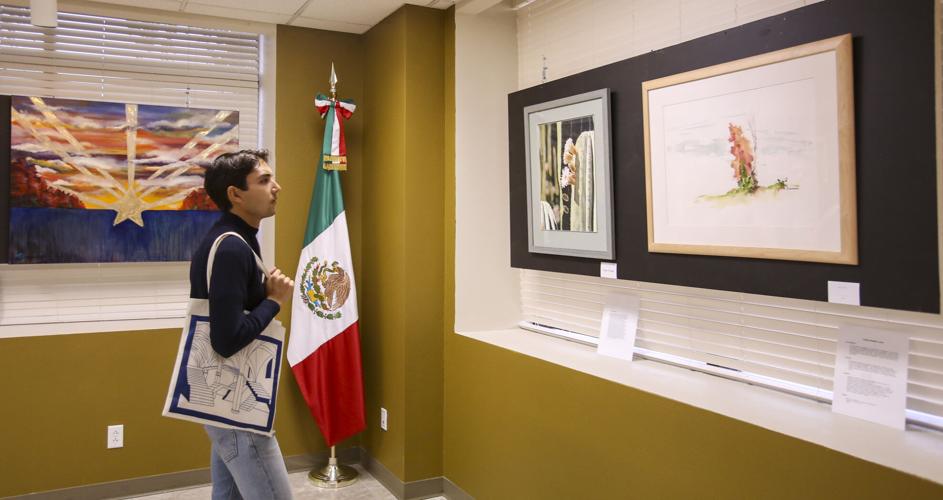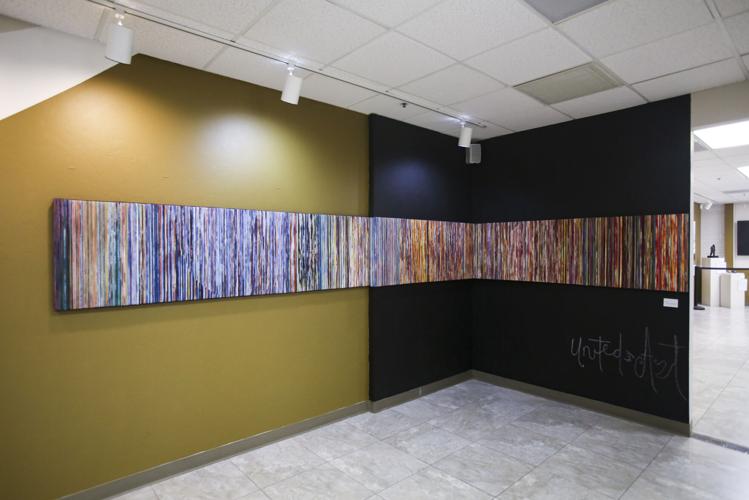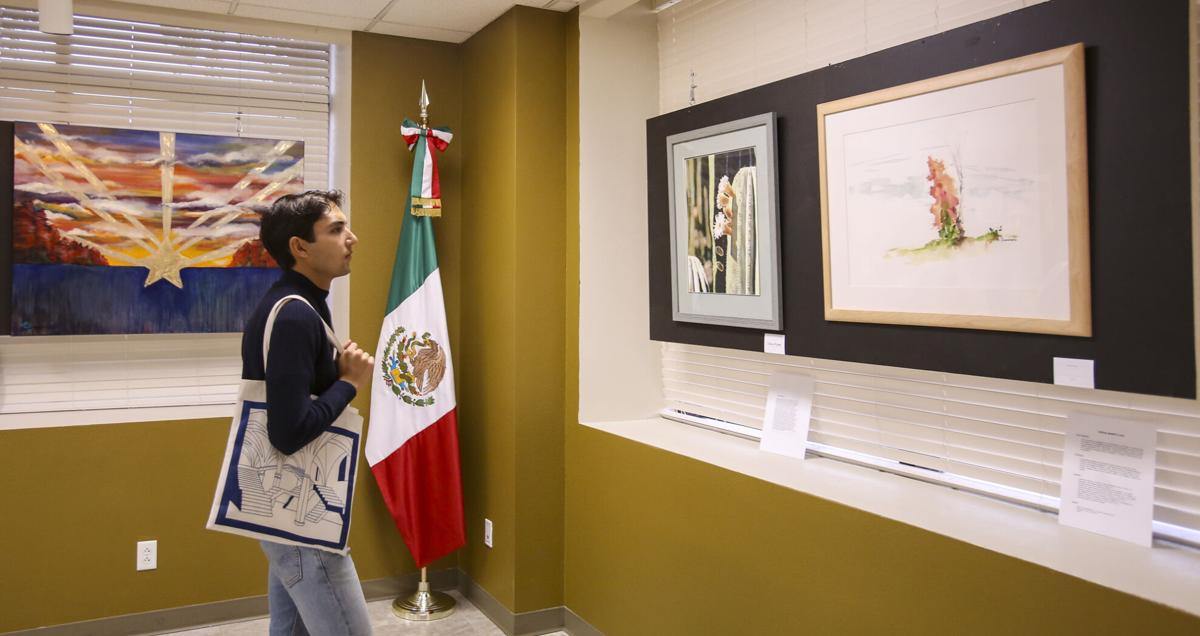Art is human, it is something that overcomes the barriers imposed by society and unites us. That’s what the Mexican Consulate in Tucson is trying to show with its new exhibition “United by Art: Humanized Nature.”
This is the third iteration of “United for Art,” which opened to the public on Nov. 17, at the consulate’s Leonora Carrington Gallery.
The first iteration opened in 2018 and began as a collaboration between Enrique Gómez Montiel, then appointed consul, and Sandra Bernal Córdova, a professor at the University of Arizona’s School of Architecture.
The idea was to bring artists of all backgrounds to those who visit the consulate and to show that it is important to see differences as something that enriches life, not separates communities.
Bernal always had a very strong connection with the Mexican community thanks to Consul Gómez Montiel, so when Gómez presented her with his idea for the exhibition, she couldn’t resist. “He had the idea, and I had the contacts of artists and the experience as a curator in Mexico City, so we went to work.”
After two iterations of the exhibition came COVID, so of course there was no exhibition in 2020 or 2021, but this year with Consul Rafael Barceló Durazo, the idea arose again.
Aware of the importance of bringing art to a public space, Barceló joined Bernal to bring the exhibition back to the consulate.
“We as people are united by art,” Barceló said. “Here we have art from people of all identities, Mexican and American, yes, but also Japanese, Italian, African-American and many others.”
Barceló indicated that the exhibition also unites different generations, with three very different works made by three generations of the same family.

Holly Swangstu's work "Reflections: Where the Desert Meets the Sea, A Love Letter to the People of Cabo Pulmo National Park" at the "United by Art: Humanized Nature" exhibition at the Mexican Consulate in Tucson.
It’s not just in the identity of the artists where diversity is found, but also in the art itself. The technique, materials and approach change from work to work. There is photography, works with copper and others drawn with pencil and paper.
One of the most unique things about the exhibition was seeing what the theme of “Humanized Nature” meant to each artist. Bernal presented the idea because she works with the art of architecture and its relationship to place. So, it was a natural step to bring together art with nature and its relationship to humanity for the exhibition.
Some artists presented the theme through a lens of conservation, others about the relationship between nature and industry and how that has changed our lives, and there were also those who presented her with expressionist art that confronts the viewer with what it means for them.
The exhibition also fulfills another goal of Gómez’s, which is to bring art to a public space so that different people can enjoy it.
“The consulate is not a place where you usually want to go, it’s like the bank,” said Gustavo Silva, who was renewing his passport at the consulate when he came across the works. “You come in, do your paperwork, and then leave. But with things like this exhibition, the place grows to be something more. Something made and enjoyed by the community. It’s a relief to be able to see such inspiring art here.”
The exhibition of 48 works is free and will be open to the public at the consulate, 3915 E. Broadway, from 8 a.m. at 5 p.m. Monday through Friday until Jan. 19.
Beverly Fisher opened Light | Space, her gallery/studio art space at 307 S. Convent Ave. in the Barrio Viejo neighborhood. Her focus is fine craft and art, which is minimal and nonrepresentational. On view right now is artwork by Bonnie Lynch and Linda Lynch.
The exhibition runs through December. The gallery is open Wednesday through Saturday, 12:00p.m. - 5:00p.m. Video by: Mamta Popat, Arizona Daily Star






